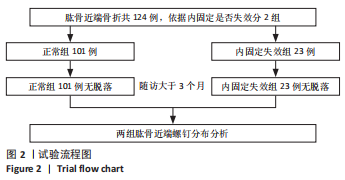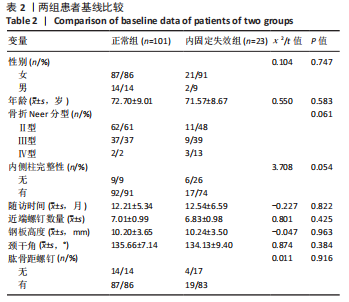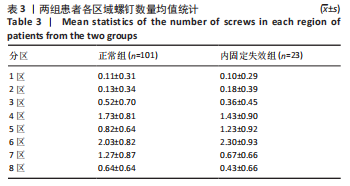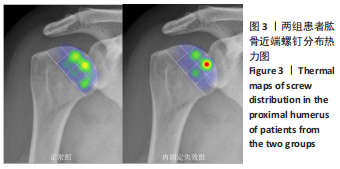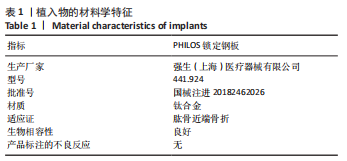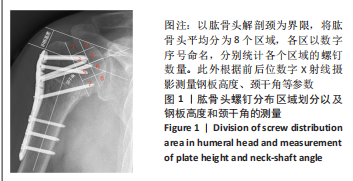[1] PATEL AH, WILDER JH, OFA SA, et al. Trending a decade of proximal humerus fracture management in older adults. JSES Int. 2022;6(1):137-143.
[2] BAKER HP, GUTBROD J, STRELZOW JA, et al. Management of Proximal Humerus Fractures in Adults-A Scoping Review. J Clin Med. 2022;11(20):6140.
[3] JAWA A, BURNIKEL D. Treatment of Proximal Humeral Fractures: A Critical Analysis Review. JBJS Rev. 2016;4(1):e2.
[4] KAVURI V, BOWDEN B, KUMAR N, et al. Complications Associated with Locking Plate of Proximal Humerus Fractures. Indian J Orthop. 2018;52(2):108-116.
[5] LAUX CJ, GRUBHOFER F, WERNER C, et al. Current concepts in locking plate fixation of proximal humerus fractures. J Orthop Surg Res. 2017;12(1):137.
[6] MARONGIU G, VERONA M, CARDONI G, et al. Synthetic Bone Substitutes and Mechanical Devices for the Augmentation of Osteoporotic Proximal Humeral Fractures: A Systematic Review of Clinical Studies. J Funct Biomater. 2020;11(2):29.
[7] SUN Q, WU X, WANG L, et al. The plate fixation strategy of complex proximal humeral fractures. Int Orthop. 2020;44(9):1785-1795.
[8] 汪秋柯. 肱骨近端骨折分型与锁定钢板内固定术后继发性螺钉穿出的关系[D]. 上海:上海交通大学, 2019.
[9] LONGO UG, PETRILLO S, BERTON A, et al. Reverse total shoulder arthroplasty for the management of fractures of the proximal humerus: a systematic review. Musculoskelet Surg. 2016;100(2):83-91.
[10] LIEW AS, JOHNSON JA, PATTERSON SD, et al. Effect of screw placement on fixation in the humeral head. J Shoulder Elbow Surg. 2000;9(5):423-426.
[11] TINGART MJ, LEHTINEN J, ZURAKOWSKI D, et al. Proximal humeral fractures: regional differences in bone mineral density of the humeral head affect the fixation strength of cancellous screws. J Shoulder Elbow Surg. 2006;15(5):620-624.
[12] ERHARDT JB, STOFFEL K, KAMPSHOFF J, et al. The position and number of screws influence screw perforation of the humeral head in modern locking plates: a cadaver study. J Orthop Trauma. 2012;26(10):e188-e192.
[13] GARDNER MJ, WEIL Y, BARKER JU, et al. The importance of medial support in locked plating of proximal humerus fractures. J Orthop Trauma. 2007;21(3): 185-191.
[14] 李波, 张世民, 胡孙君, 等. 肱骨头下皮质外距螺钉重建内侧柱稳定性的三维有限元分析[J]. 中国修复重建外科杂志,2022,36(8):995-1002.
[15] MEHTA S, CHIN M, SANVILLE J, et al. Calcar screw position in proximal humerus fracture fixation: Don’t miss high. Injury. 2018,49(3):624-629.
[16] REN H, WU L, ZHANG X, et al. The effect of integrity of lesser tuberosity-medial calcar on postoperative outcome in the proximal humeral fracture. J Orthop Surg Res. 2023;18(1):363.
[17] PONCE BA, THOMPSON KJ, RAGHAVA P, et al. The role of medial comminution and calcar restoration in varus collapse of proximal humeral fractures treated with locking plates. J Bone Joint Surg Am. 2013;95(16):e111-e113.
[18] LEE SH, HAN SS, YOO BM, et al. Outcomes of locking plate fixation with fibular allograft augmentation for proximal humeral fractures in osteoporotic patients: comparison with locking plate fixation alone. Bone Joint J. 2019;101-B(3):260-265.
[19] GARDNER MJ, BORAIAH S, HELFET DL, et al. Indirect medial reduction and strut support of proximal humerus fractures using an endosteal implant. J Orthop Trauma. 2008;22(3):195-200.
[20] HE Y, ZHANG Y, WANG Y, et al. Biomechanical evaluation of a novel dualplate fixation method for proximal humeral fractures without medial support. J Orthop Surg Res. 2017;12(1):72.
[21] PARK SG, KO Y. Medial Buttress Plating for Humerus Fractures With Unstable Medial Column. J Orthop Trauma. 2019;33(9):e352-e359.
[22] SOMASUNDARAM K, HUBER CP, BABU V, et al. Proximal humeral fractures: the role of calcium sulphate augmentation and extended deltoid splitting approach in internal fixation using locking plates. Injury. 2013;44(4):481-487.
[23] RODERER G, SCOLA A, SCHMOLZ W, et al. Biomechanical in vitro assessment of screw augmentation in locked plating of proximal humerus fractures.Injury. 2013;44(10):1327-1332.
[24] 林浩东,傅慧超,吴晓明. 《2021版老年肱骨近端骨折治疗指南》解读[J]. 中华创伤杂志,2022,38(9):6.
[25] PADEGIMAS EM, ZMISTOWSKI B, LAWRENCE C, et al. Defining optimal calcar screw positioning in proximal humerus fracture fixation. J Shoulder Elbow Surg, 2017;26(11):1931-1937.
[26] 李波, 张世民, 胡孙君, 等. 肱骨头下皮质外距螺钉重建内侧柱稳定性的三维有限元分析[J]. 中国修复重建外科杂志,2022,36(8):995-1002.
[27] ZHANG X, HUANG J, ZHAO L, et al. Inferomedial cortical bone contact and fixation with calcar screws on the dynamic and static mechanical stability of proximal humerus fractures. J Orthop Surg Res. 2019;14(1):1.
[28] GALLAGHER B, SILVA MJ, RICCI WM. Effect of off-axis screw insertion, insertion torque, and plate contouring on locked screw strength. J Orthop Trauma. 2014; 28(7):427-432.
[29] PADEGIMAS EM, CHANG G, NAMJOUYAN K, et al. Failure to restore the calcar and locking screw cross-threading predicts varus collapse in proximal humerus fracture fixation. J Shoulder Elbow Surg. 2020;29(2):291-295.
[30] OCKERT B, BRAUNSTEIN V, KIRCHHOFF C, et al. Monoaxial versus polyaxial screw insertion in angular stable plate fixation of proximal humeral fractures: radiographic analysis of a prospective randomized study. J Trauma. 2010;69(6): 1545-1551.
[31] FLETCHER J, WINDOLF M, RICHARDS RG, et al. Screw configuration in proximal humerus plating has a significant impact on fixation failure risk predicted by finite element models. J Shoulder Elbow Surg. 2019;28(9):1816-1823.
[32] ERHARDT JB, STOFFEL K, KAMPSHOFF J, et al. The position and number of screws influence screw perforation of the humeral head in modern locking plates: a cadaver study. J Orthop Trauma. 2012;26(10):e188-e192.
[33] LINDSAY C, HASTY E, CARPENTER D, et al. Proximal Humeral Locking Plates: A Cadaveric Study of 5 Versus 7 Metaphyseal Locking Screws. Orthopedics. 2018; 41(5):306-311.
[34] BARVENCIK F, GEBAUER M, BEIL FT, et al. Age- and sex-related changes of humeral head microarchitecture: histomorphometric analysis of 60 human specimens. J Orthop Res. 2010;28(1):18-26.
[35] DONOHUE DM, SANTONI BG, STOOPS TK, et al. Biomechanical Comparison of 3 Inferiorly Directed Versus 3 Superiorly Directed Locking Screws on Stability in a 3-Part Proximal Humerus Fracture Model. J Orthop Trauma. 2018;32(6):306-312.
[36] CIRIC D, MISCHLER D, QAWASMI F, et al. Secondary Perforation Risk in Plate Osteosynthesis of Unstable Proximal Humerus Fractures: A Biomechanical Investigation of the Effect of Screw Length. J Orthop Res. 2019;37(12):2625-2633.
[37] FLETCHER J, WINDOLF M, GRUNWALD L, et al. The influence of screw length on predicted cut-out failures for proximal humeral fracture fixations predicted by finite element simulations. Arch Orthop Trauma Surg. 2019,139(8):1069-1074.
[38] SAUL D, HIMMELMANN T, DRESING K. Humeral Tip-apex-distance as a Prognostic Marker for Proximal Humeral Fractures in 203 Patients. Open Orthop J. 2017; 11:297-308.
[39] SPROSS C, JOST B, RAHM S, et al. How many radiographs are needed to detect angular stable head screw cut outs of the proximal humerus - a cadaver study. Injury. 2014;45(10):1557-1563. |

